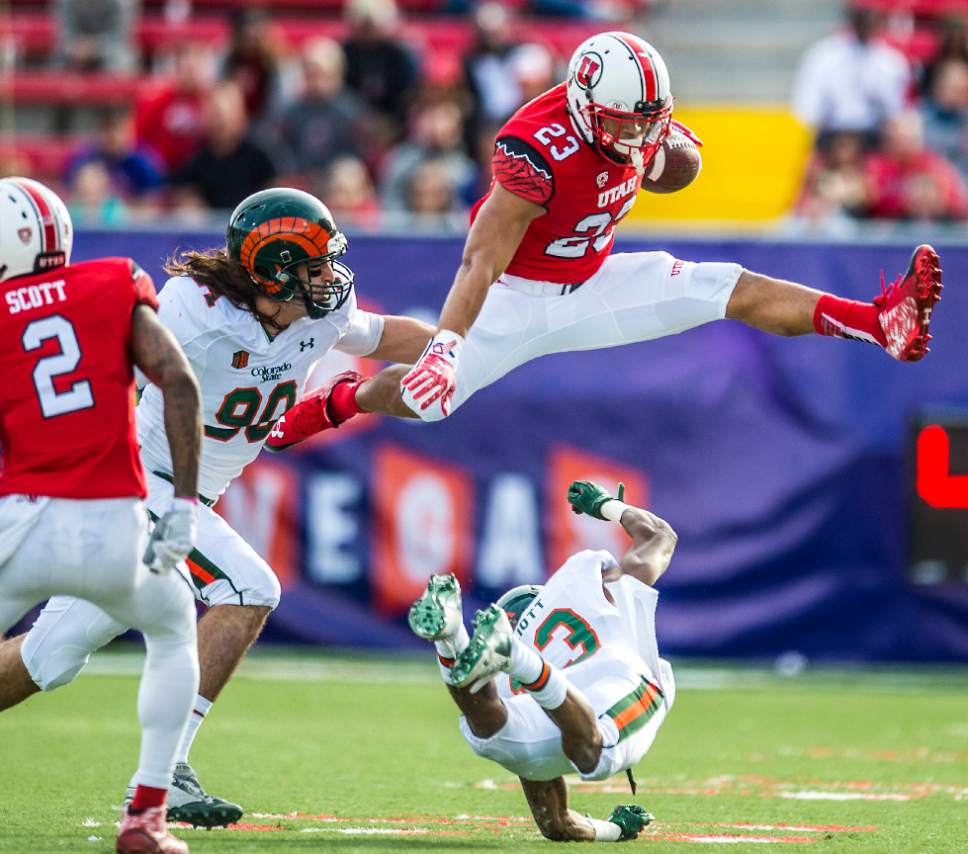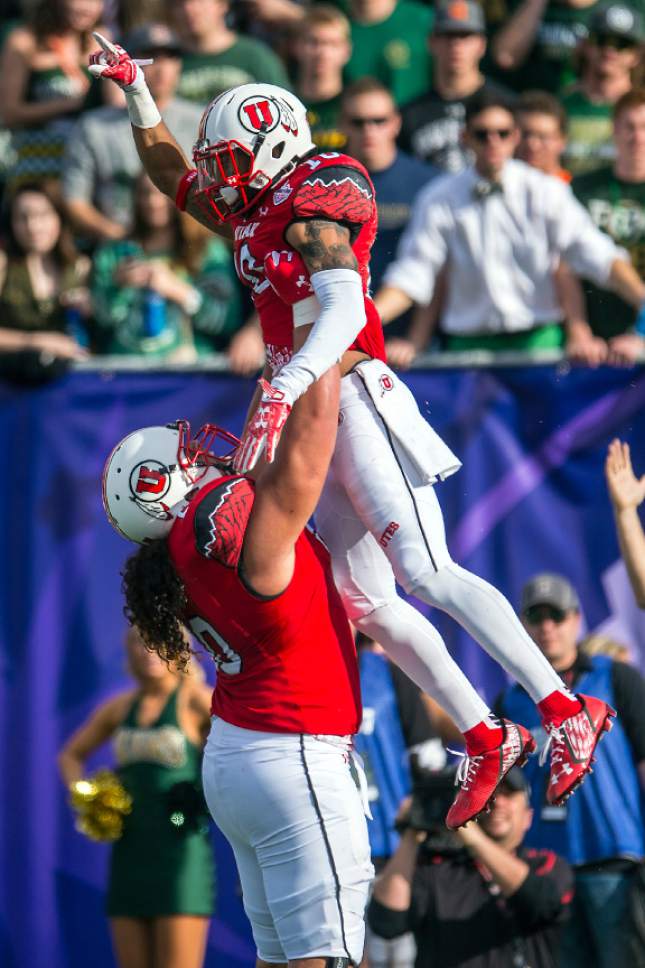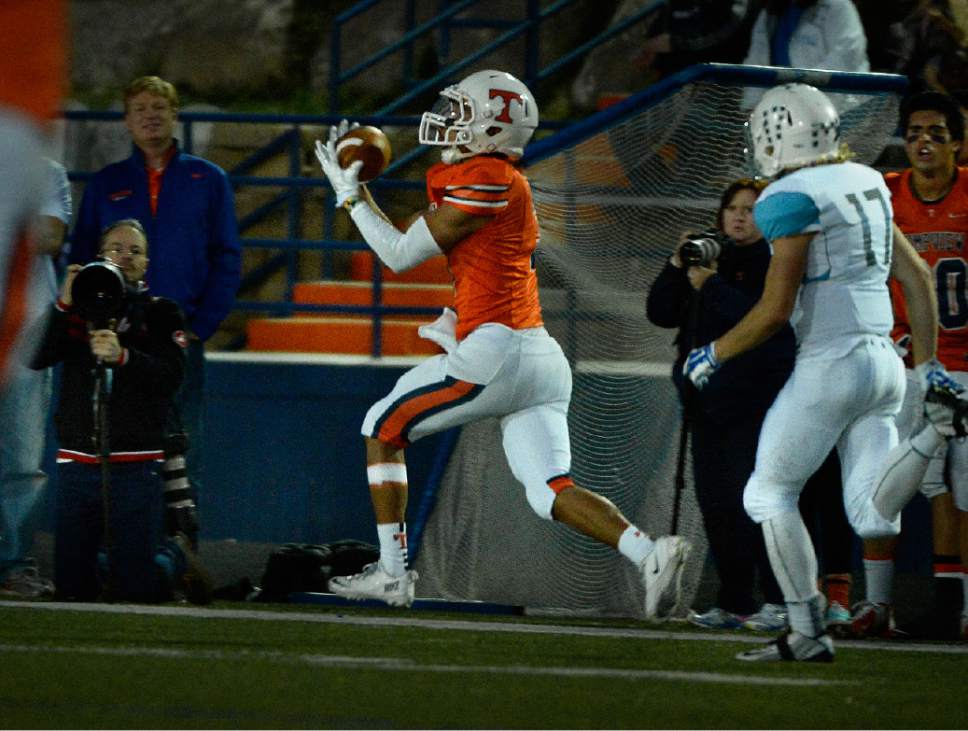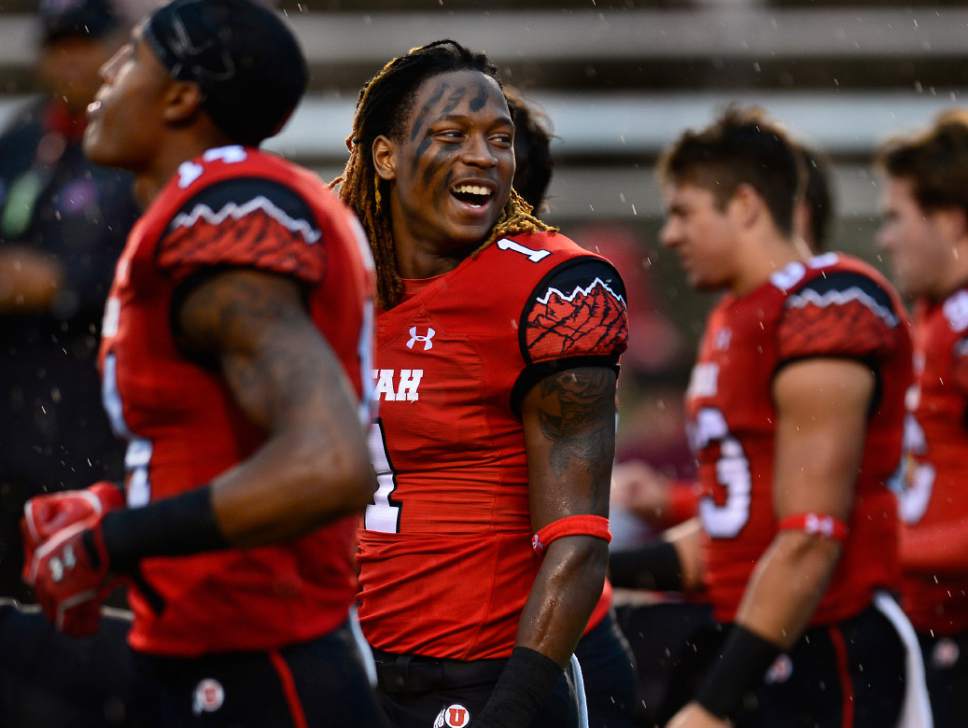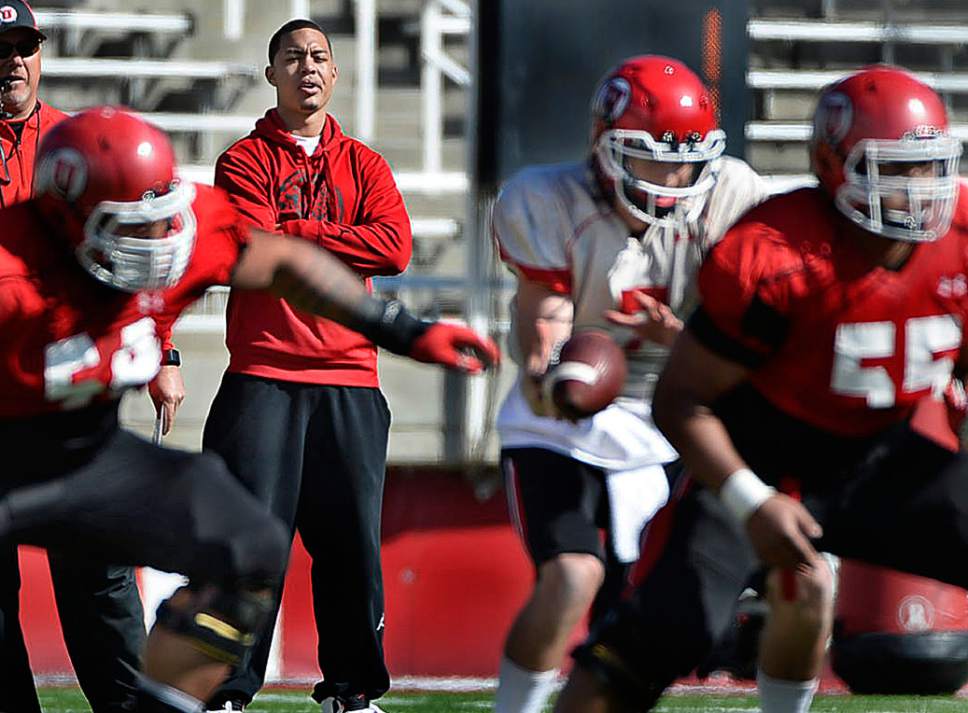This is an archived article that was published on sltrib.com in 2015, and information in the article may be outdated. It is provided only for personal research purposes and may not be reprinted.
What drama?
A tumultuous offseason followed a 9-4 season in which the Utes won the Las Vegas Bowl and erased doubts about their ability to succeed in the Pac-12, but they'll return on Tuesday to the field, where the program's health is easier to assess.
For Ute fans, there are some causes for comfort:
• Kyle Whittingham has a newly sweetened deal that takes him through 2018.
• John Pease, Justin Ena and Lewis Powell have filled the vacancies caused by the departures of Kalani Sitake, Dave Christensen and Ilaisa Tuiaki, and former New York Jet Sione Pouha joins the team as a student assistant.
• Sixteen starters return — seven on offense and nine on defense — as well as the nation's top punter and one of its premier kickers.
But there are still questions. There are always questions. Here are five that we'll have our eye on (and note that the first two are repeats from 2014).
Which quarterbacks will step up to push the starters? • Gone is Adam Schulz, to Houston.
Switched to free safety is junior Jason Thompson.
That leaves (deep breath) seniors Travis Wilson and Kendal Thompson, redshirt sophomores Conner Manning and Brandon Cox, and redshirt freshmen Chase Hansen and Donovan Isom to divvy up the reps this spring.
Wilson ended the season as Utah's starting quarterback and will own that title on Day One, having earned it with 5,308 career passing yards, 41 passing touchdowns, 735 career rushing yards and 14 rushing scores.
Thompson pushed Wilson last season after transferring from Oklahoma and started the last game he played, sustaining a season-ending knee injury against national runners-up Oregon. He has recovered ahead of schedule and is cleared for non-contact drills.
But although that duo limited interceptions (8) and won games (9), Utah's passing offense didn't set the world alight in 2014, finishing 93rd in the nation at 198 yards per game.
Utah fans, naturally, want to know what the other guys have to offer.
They've received glimpses of both Manning (2-for-6 for 28 yards and a pick against Arizona) and Cox (3-for-3 for 17 yards and a 16-yard rushing score against Idaho State), who were both frequently praised for their intelligence by quarterbacks coach and newly named co-offensive coordinator Aaron Roderick.
Isom, however, remains a mystery, doing a large portion of last year's work after practice, firing spirals while his teammates showered or spoke to media.
And Hansen returns from an LDS mission having offered a tantalizing glimpse of his dual-threat abilities in spring 2013, but with many outside the program assuming that his eventual home is on defense.
It's a wealth of possibilities. The problem remains: There are only so many reps to go around. If Manning, Cox, Hansen or Isom want to join the conversation, spring camp offers their best hope.
How will the offense differ under the eighth new coordinator in eight years? • Roderick is about the furthest thing from a new face, and co-coordinator Jim Harding played for Christensen and then worked under him for seven years.
So don't expect a wholesale change, to borrow a favorite Whittingham phrase.
The irony is that after we heard all last spring that Christensen's attack wasn't a wholesale change, in retrospect, it appears to have felt that way to the players.
The terminology was different.
The tempo was different.
The approach was different.
Roderick told The Tribune after his promotion that Utah's coaches feel good about the direction of the offense.
The Utes ranked just 76th in total offense, at 388 yards per game, but they had 439 or more three times in their final five games, culminating with 548 in their rout of the Rams.
Whether Christensen's scheme is Roderick's favorite is beside the point: He and Harding feel that it's bound to get better in Year Two, as players gain familiarity and they are able to unfold new wrinkles in the gameplan.
Still, they are their own men. They may feel that they can better tailor the scheme to Utah's personnel, or feel that a different mix of run and pass is called for.
For instance, after we witnessed a heavy emphasis on two-back sets during last year's installation process, Utah deviated from that for the first half of the season.
If A-Hard (just trying it out, folks) intends to get senior Bubba Poole and sophomore Troy McCormick more involved, we'll see our first hint of that this spring.
Does Utah have enough depth at linebacker and cornerback? • On paper, Utah's starting defense looks pretty fierce.
If there is a weakness in their first 11, it might be at free safety, where Marcus Williams initially struggled as a freshman before acclimating, and where Thompson is already listed as a co-starter after playing quarterback last season.
Utah believes it has all-conference candidates at strong safety (Tevin Carter), defensive end (Hunter Dimick), defensive tackle (Lowell Lotulelei) and linebacker (Jared Norris, Gionni Paul and Jason Whittingham).
Still, worrywarts will wonder about the readiness of the players behind those 11, and the most cause for alarm may be — counterintuitively, given the three all-conference candidates — at linebacker.
Whittingham and Paul both missed large chunks of last season. Norris and Paul will both be held out at the start of spring with undisclosed injuries.
Big things are expected from Snow transfer Sunia Tauteoli, but he's also out at the start of spring.
In a pinch, Fanaika makes a solid outside linebacker, except that Utah would like to keep him at defensive end this season, and that leaves returned missionary Jake Jackson, sophomore walk-on Christian Drews and sophomore Uaea Masina.
At corner, Utah loses Eric Rowe and Davion Orphey and gets back sophomore Reginald Porter, who tore his ACL during 2014 fall camp after earning a reputation in practice as Utah's best cover corner.
The Utes will also add South Carolina transfer Ahmad Christian in fall, but he tore his Achilles during offseason workouts and will miss spring camp.
The onus is on redshirt freshman Casey Hughes, sophomores Boobie Hobbs and Tavaris Williams, and junior wide receiver convert Brian Allen to alleviate depth concerns after making little noise last season.
Who will replace return specialist extraordinaire Kaelin Clay? • Ray Guy Award winner Tom Hackett and Lou Groza semifinalist Andy Phillips mean that Utah fans will be as excited as those of any team to be kicking the ball.
But what about when the other team is kicking?
Clay may have been as responsible last season as any player, save Booker and Nate Orchard, for Utah's success.
Not only did he return three punts and one kickoff for scores — and flip the field a handful of other times — but he led the Utes in receiving yards.
It's asking a lot for somebody to tie the school record for return touchdowns in a season, but while the Utes have a handful of fleet-footed playmakers, Clay's successor isn't apparent.
Poole has experience returning — with eight career punt returns for 112 yards and two kick returns for 38 — and so does Booker — who was an excellent kickoff returner at American River College but was limited in 2014 because of his heavy workload at running back.
Obviously, given that Booker is touted as a potential Heisman candidate, Poole is the more likely to receive extracurricular duties.
McCormick, Hobbs, junior Dominique Hatfield and sophomore Monte Seabrook (converted from running back to wide receiver this spring) are also likely to be in the mix this spring, by virtue of their speed and shiftiness.
Alas, what we learn in spring may not matter if Blinn College corner Kyle Fulks, Los Angeles Harbor College corner Cory Butler, or Timpview's Britain Covey seize these duties in fall.
But who wants to wait that long?
How will the offensive line shake out? • Complicating matters is that Utah announced Monday that sophomore Salesi Uhatafe will miss spring. Uhatafe impressed enough as a redshirt freshman to unseat team captain Junior Salt, and he's likely to be a fixture in 2015.
In his place temporarily is Nick Nowakowski, a 6-foot-1 former walk-on who earned a scholarship last year and is one of the team's strongest players, capable of squatting 655 pounds.
There's another absence, though, and it's permanent.
When junior Jeremiah Poutasi declared for the NFL Draft, Utah lost one of the most physically imposing and hardest-driving left tackles in the conference.
Sliding over into Poutasi's left tackle spot is 2014 right tackle J.J. Dielman, who is as many as 50 pounds lighter but led the Utes prior to the bowl game in snaps played (852) and cuts (31).
In the running for Dielman's old job are junior Sam Tevi and redshirt freshman Jackson Barton — two players with a whole lot of promise, but very little proof.
Tevi is a converted defensive tackle who coaches have identified as a better offensive tackle for his nimble feet and his natural pad level.
Barton came to Utah as one of the most heralded prospects in memory out of Brighton High, a four-star offensive tackle who is said to have worked his tail off while redshirting.
Things could get more complicated, though, given that junior left guard Isaac Asiata has proven capable of playing both guard spots and right tackle in the past. Also, junior Hiva Lutui spelled senior center Siaosi Aiono last year with little apparent dropoff, and Aiono is thought to be capable of playing other roles.
Twitter: @matthew_piper


